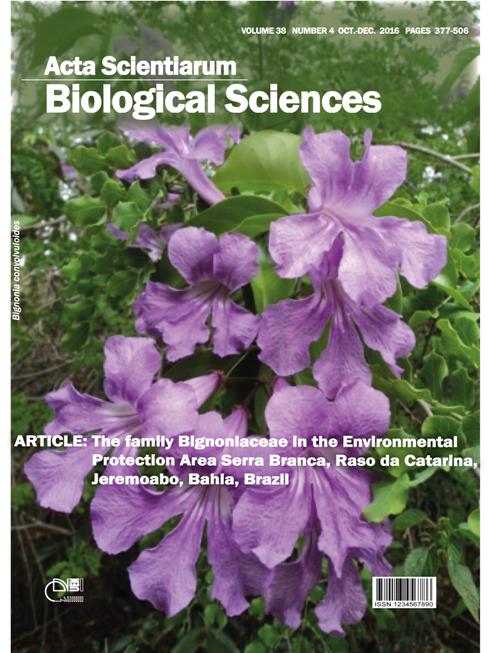<b>Distinct strains of <i>Staphylococcus aureus</i> lead to different inflammatory response patterns in a murine model of intradermal infection
Abstract
Staphylococcus aureus infection may lead to the development of soft tissue damage. It has been evaluated in other researches using different animal models. In addition, the inflammatory response developed by the host organism facing an infection by this pathogen has been analyzed and neutrophils have been linked to the immune response developed. In this study, we aimed to compare the inflammatory response developed by the host induced by an intradermal infection with a methicillin-resistant strain of Staphylococcus aureus (MRSA) or a methicillin-susceptible strain of Staphylococcus aureus (MSSA). Mice euthanasia occurred in the following times: 6, 24, 48 and 96 hours of infection; the cell number and the cytokine release were evaluated. Our results showed that infections by different strains of Staphylococcus aureus lead to different immune response degrees. Although MRSA infection induces higher neutrophil recruitment to the infection site and higher inflammatory response in the draining lymph node, the increased production of TNF-α, IFN-γ, IL-6 and IL-1β in the lymph node 6 hours after the infection was observed only in MSSA infected animals. Considering the data, MSSA may have mechanisms to prevent neutrophil recruitment to the infection site.
Downloads
DECLARATION OF ORIGINALITY AND COPYRIGHTS
I Declare that current article is original and has not been submitted for publication, in part or in whole, to any other national or international journal.
The copyrights belong exclusively to the authors. Published content is licensed under Creative Commons Attribution 4.0 (CC BY 4.0) guidelines, which allows sharing (copy and distribution of the material in any medium or format) and adaptation (remix, transform, and build upon the material) for any purpose, even commercially, under the terms of attribution.
Read this link for further information on how to use CC BY 4.0 properly.












1.png)




3.png)













